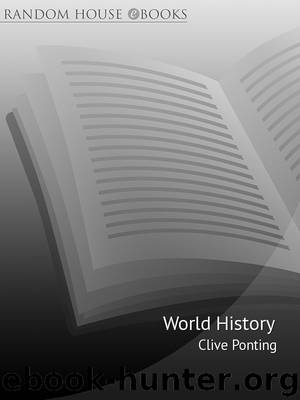World History by Clive Ponting

Author:Clive Ponting
Language: eng
Format: epub
ISBN: 9781409046394
Publisher: Random House
15.10.2 Hungary
Hungary was, like Poland-Lithuania (to which it was united for a very short time in the 1440s), potentially a very large kingdom, but, even more than its neighbour, it suffered from an unstable and weak dynastic line; and it also had to cope with the growing power of the Ottomans, who were ultimately to bring about its demise. However, on two occasions Hungary nearly became a central part of what could have been major empires in eastern Europe. Hungary recovered only slowly from the Mongol invasions and in the late thirteenth century the central state collapsed as the aristocracy seized more and more power. For seven years after the death in 1301 of the last Arpad king, Andras III, there was no ruler. Eventually the church and the lower nobility forced the election of Charles of Anjou (the son of the King of Naples who was related by marriage to the Arpads) as Karoly I in 1308. During his long reign until 1342 he was able to rebuild the position of the monarchy, take back much of the land the aristocracy had appropriated, and increase royal revenues through taxes on the growing mining of gold and silver. His successor, Lajos I (1342–82), spent most of his resources on three major efforts to seize the throne of Naples. He did, however, manage to re-establish Hungarian hegemony in Croatia, Slovenia and Dalmatia. Although he became king of Poland in 1370 he saw no advantages in a union of the two kingdoms.
On the death of Lajos there was a major power struggle in Hungary. The king of Naples seized the throne but was murdered, and the nobility supported Sigismund of Luxemburg who became King Zygmunt in 1387. He took the imperial title in 1410 and a decade later became king of Bohemia. Potentially this could have been the foundation of a major kingdom. However, most of his time was devoted to the increasing problems of Bohemia where the Hussite movement and rebellion was at its peak around 1415. After his death in 1437 there was again chaos in Hungary for three years until the Jagiellon king of Poland-Lithuania, Wladyslaw III, was chosen as King Ulaszlo of Hungary. Again this could have formed the basis for a major empire across much of central and eastern Europe. However, it only lasted for four years as the kingdom faced the reviving power of the Ottomans. Ulaszlo died at the battle of Varna in 1444. He was replaced by Janos Hunyadi, a warlord from Transylvania, who was elected as regent on behalf of the Habsburgs. However, on his death in 1458 his son Matyas was chosen as king. Instead of attacking the powerful Ottomans he turned westwards and in 1470 took Bohemia. Eventually Bohemia was partitioned – Matyas Hunyadi took Moravia and Silesia, followed in 1485 by eastern Austria, where he made Vienna his capital. On his death in 1490 control over Vienna and eastern Austria was lost. The Hungarian nobility were, like their counterparts in Poland a century earlier, desperate to avoid being incorporated into the Habsburg territories.
Download
This site does not store any files on its server. We only index and link to content provided by other sites. Please contact the content providers to delete copyright contents if any and email us, we'll remove relevant links or contents immediately.
| Africa | Americas |
| Arctic & Antarctica | Asia |
| Australia & Oceania | Europe |
| Middle East | Russia |
| United States | World |
| Ancient Civilizations | Military |
| Historical Study & Educational Resources |
Cecilia; Or, Memoirs of an Heiress — Volume 1 by Fanny Burney(32061)
Cecilia; Or, Memoirs of an Heiress — Volume 3 by Fanny Burney(31455)
Cecilia; Or, Memoirs of an Heiress — Volume 2 by Fanny Burney(31408)
The Secret History by Donna Tartt(18159)
Sapiens: A Brief History of Humankind by Yuval Noah Harari(13986)
Leonardo da Vinci by Walter Isaacson(12801)
The Radium Girls by Kate Moore(11621)
Sapiens by Yuval Noah Harari(5122)
How Democracies Die by Steven Levitsky & Daniel Ziblatt(4954)
The Wind in My Hair by Masih Alinejad(4839)
Homo Deus: A Brief History of Tomorrow by Yuval Noah Harari(4687)
Endurance: Shackleton's Incredible Voyage by Alfred Lansing(4503)
The Silk Roads by Peter Frankopan(4272)
Man's Search for Meaning by Viktor Frankl(4271)
Millionaire: The Philanderer, Gambler, and Duelist Who Invented Modern Finance by Janet Gleeson(4094)
The Rape of Nanking by Iris Chang(4022)
Hitler in Los Angeles by Steven J. Ross(3798)
The Motorcycle Diaries by Ernesto Che Guevara(3784)
Joan of Arc by Mary Gordon(3782)
